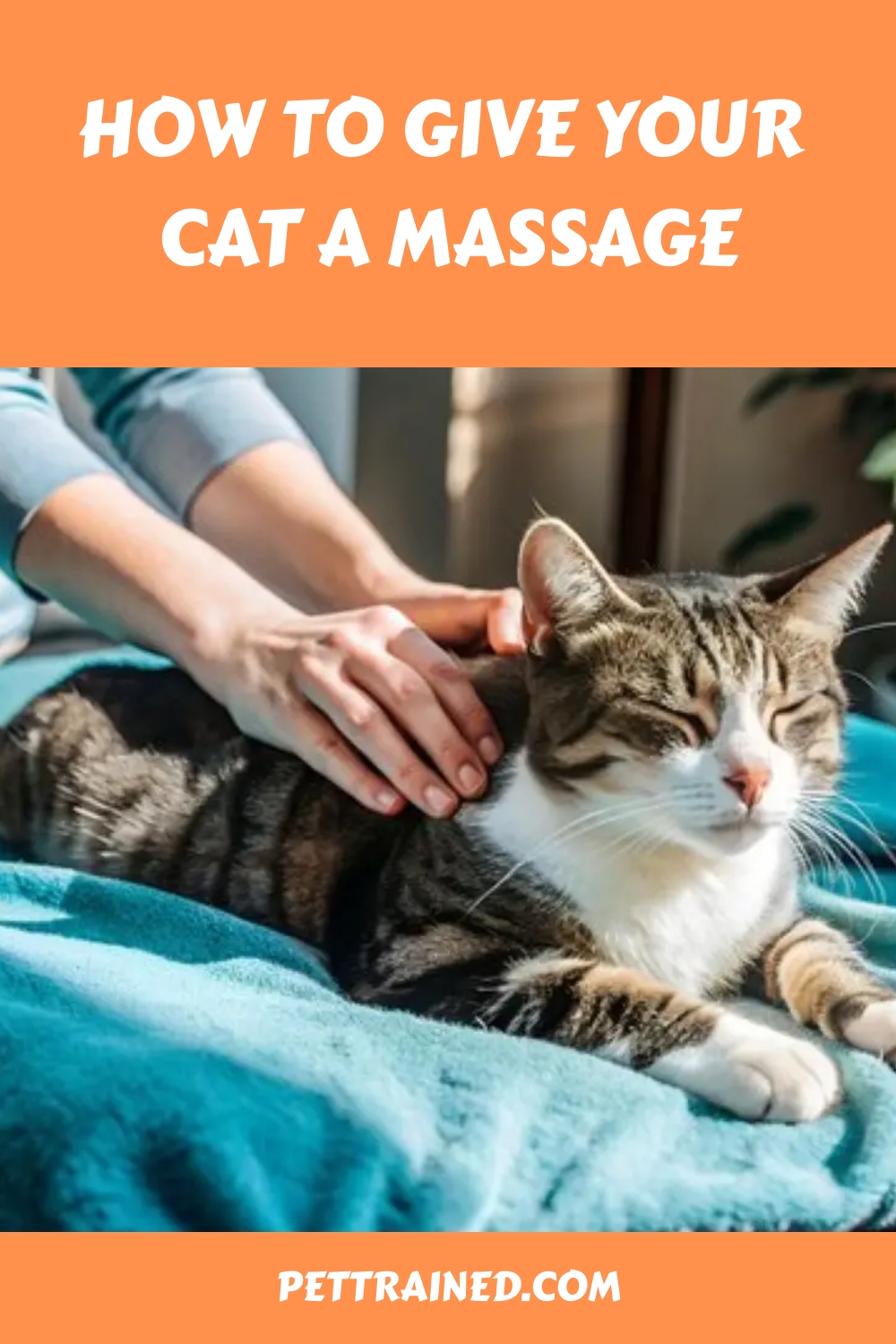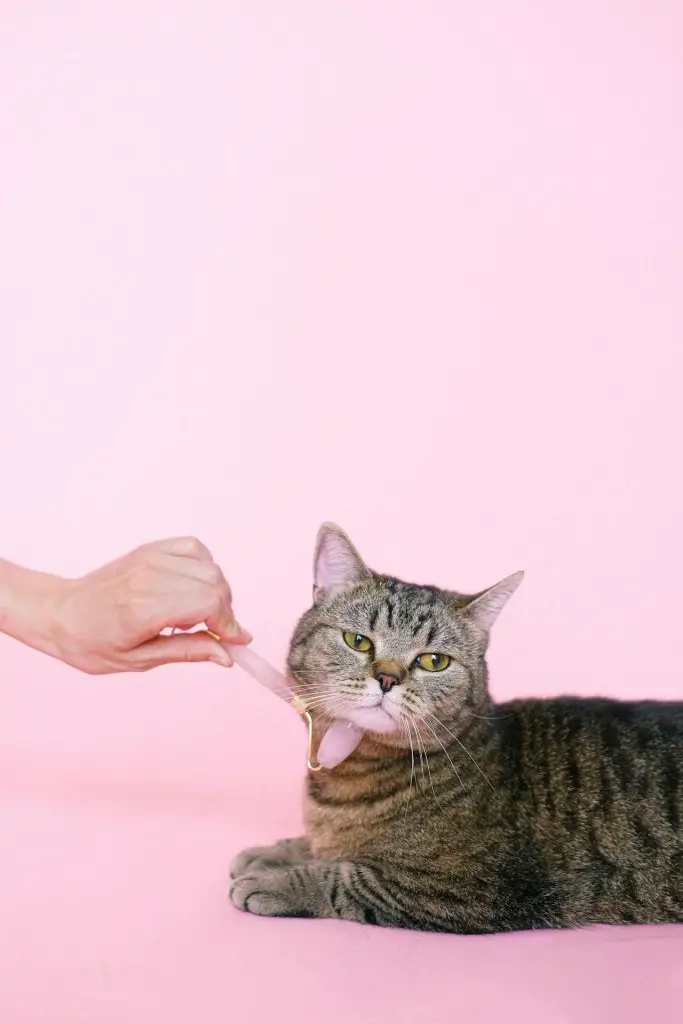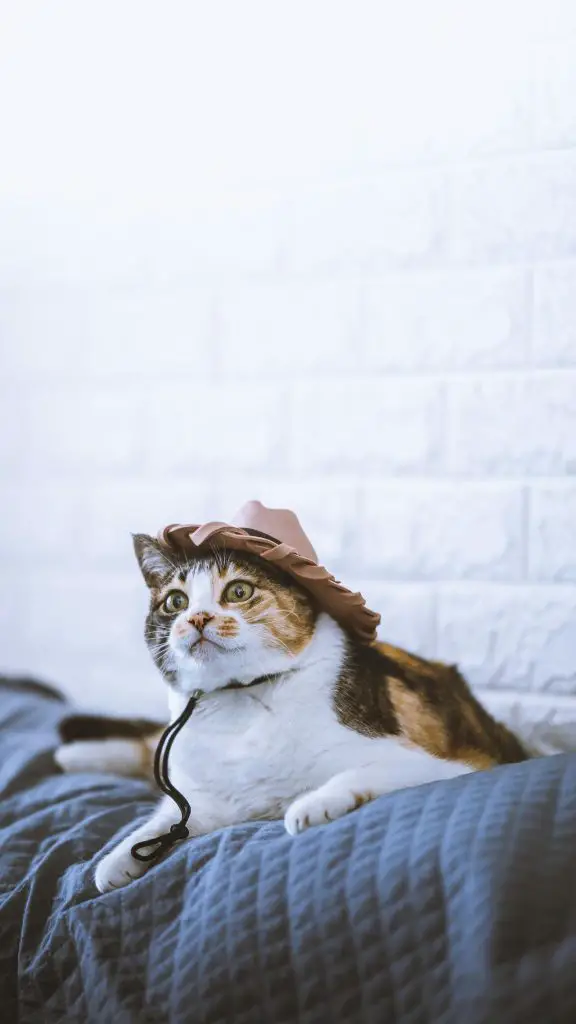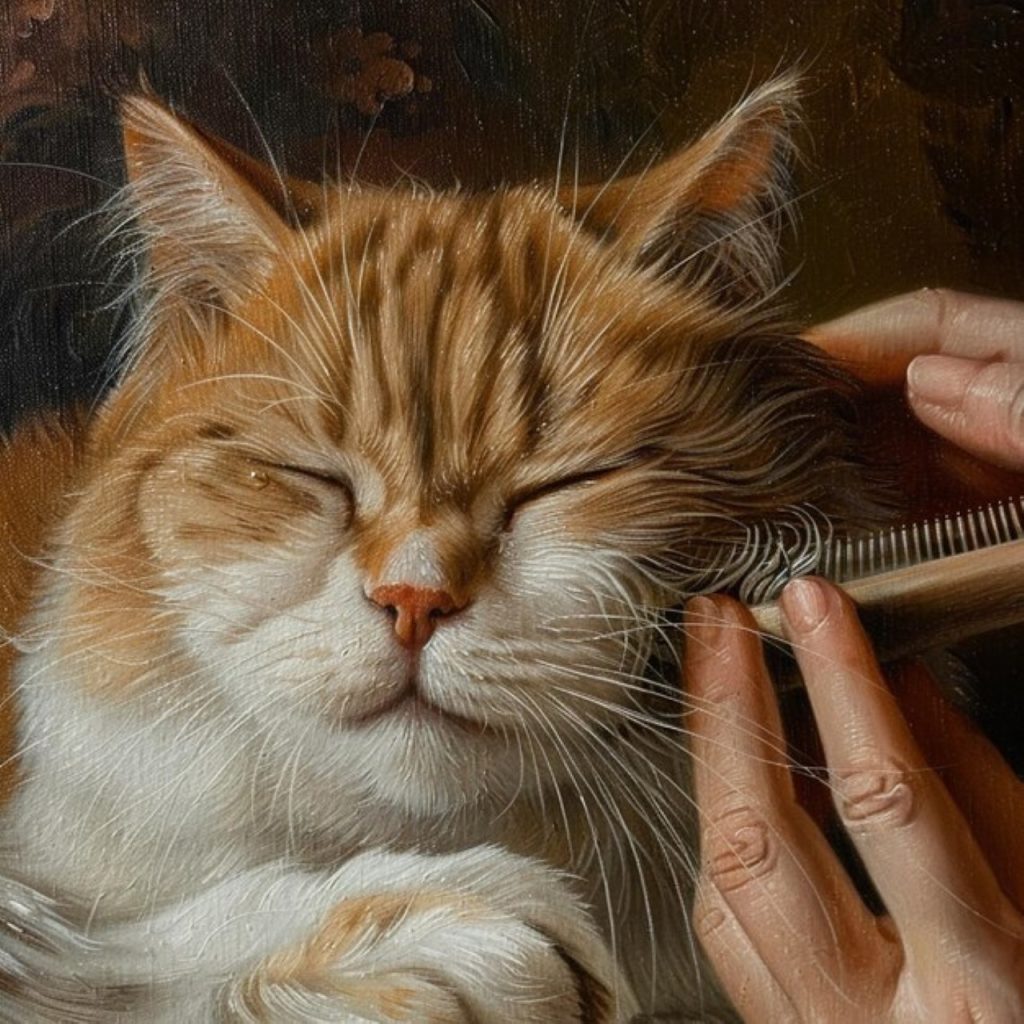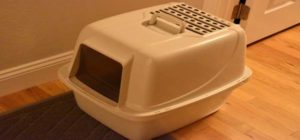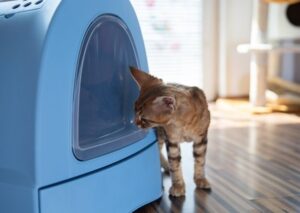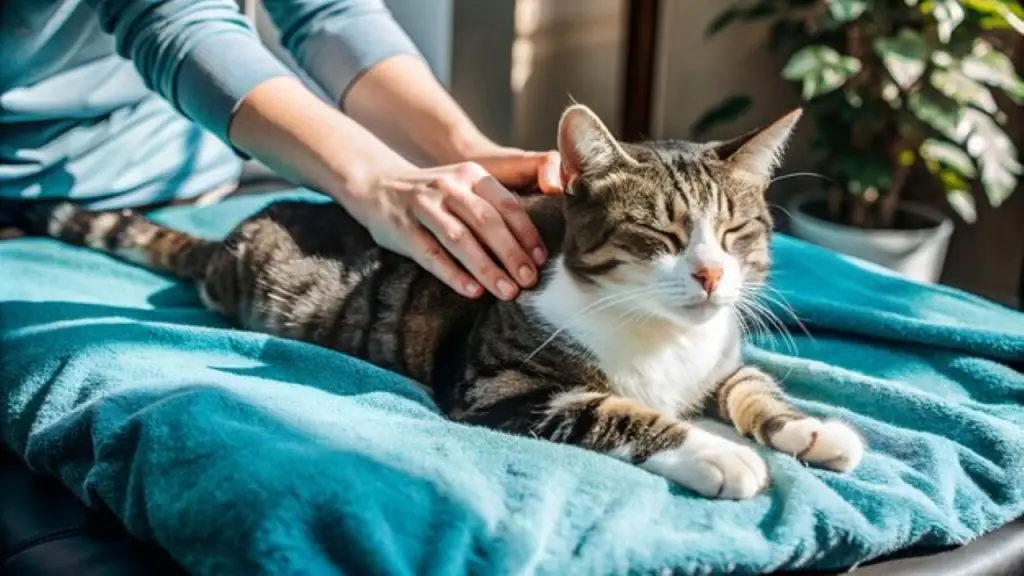
To give your cat a massage, start by creating a calm environment and observing your feline’s mood. Begin with gentle strokes along the back and sides, gradually increasing pressure while monitoring reactions. Focus on areas like the head, neck, shoulders, and base of the tail, using slow, circular motions. Keep sessions short, around 5-10 minutes, 2-3 times a week. Watch for signs of enjoyment such as purring, kneading, or slow blinking. If your cat shows discomfort, stop immediately. Remember, each cat has unique preferences, so experiment to find what your furry friend loves most. Mastering these techniques will help you become your cat’s personal relaxation expert.
Table of Contents
Key Takeaways
- Create a calm environment with soft lighting, gentle music, and a comfortable surface for your cat.
- Begin with gentle strokes along the cat’s back and sides, gradually increasing pressure while monitoring reactions.
- Focus on areas like the head, neck, shoulders, and base of the tail, using circular motions to relieve tension.
- Keep sessions short, aiming for 5-10 minutes, 2-3 times a week, and stop if signs of discomfort appear.
Preparing for the Massage
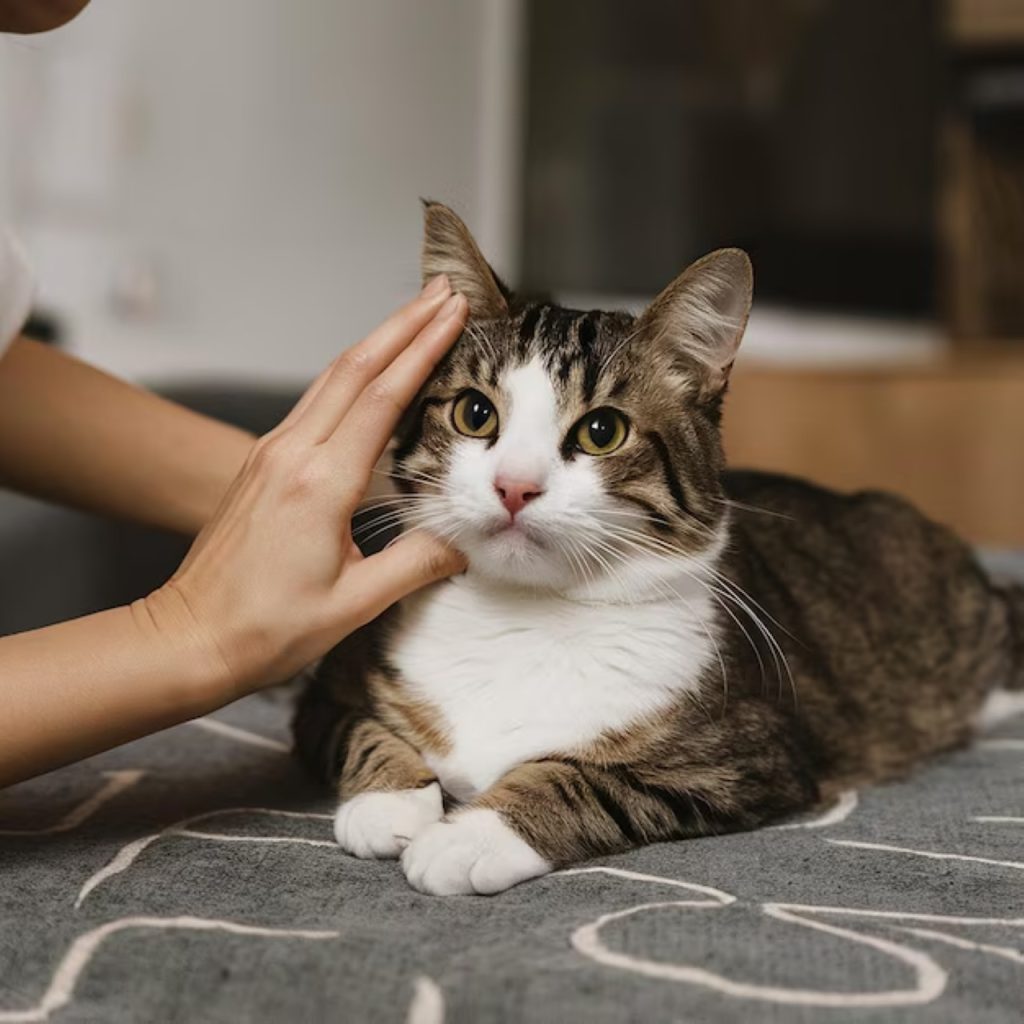
Before you begin, create a calm environment for your cat by choosing a quiet, comfortable space and gathering any necessary supplies like a soft blanket or towel.
Make certain the room temperature is pleasant for your feline friend, as this will contribute to their overall relaxation during the massage.
Next, prepare yourself mentally and physically. Wash your hands thoroughly and trim your nails to prevent any accidental scratches.
Take a few deep breaths to center yourself, as your cat can sense your energy. Remember, the goal is to promote cat relaxation and reap the massage benefits for both of you.
This post contains affiliate links. However all the information provided on this site are my own honest opinions. See more in Disclaimer.
Consider playing soft, soothing music at a low volume to enhance the tranquil atmosphere. Dim the lights if possible, as cats often prefer a less bright environment for relaxation.
Have some of your cat’s favorite treats nearby as a reward for their cooperation.
Before starting the massage, observe your cat’s body language. Look for signs that they’re receptive to touch, such as purring, kneading, or a relaxed posture.
If your cat seems anxious or agitated, it’s best to postpone the massage session to another time when they’re more at ease.
Finding the Right Time
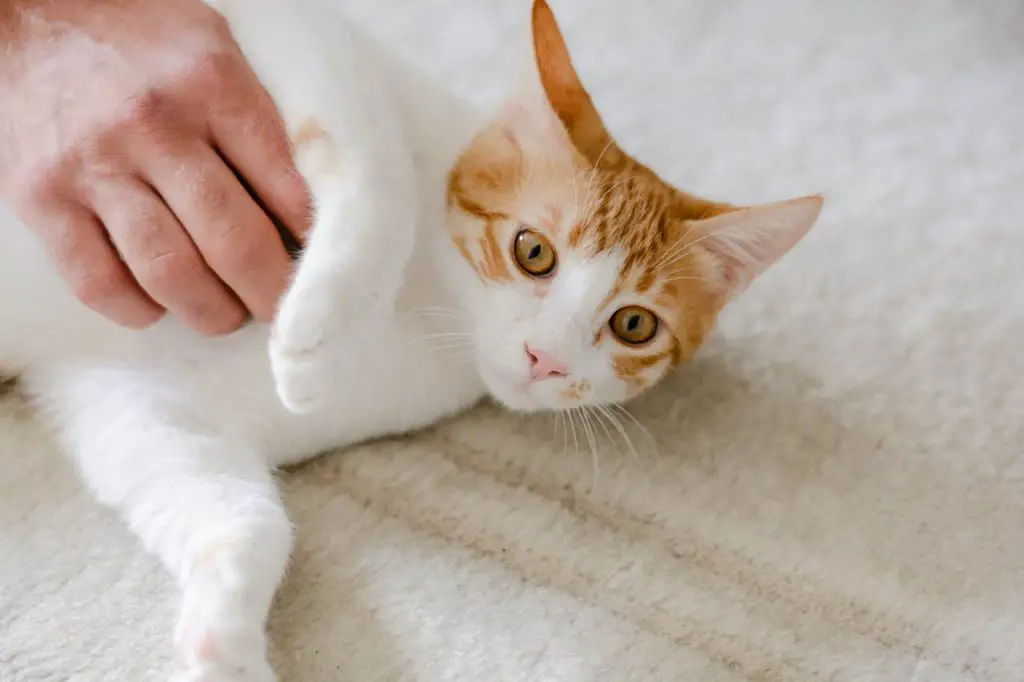
To guarantee a successful cat massage, you’ll need to choose the right moment.
Observe your cat’s mood and behavior, looking for signs of relaxation and contentment.
Select a quiet, comfortable environment where your feline friend feels safe and undisturbed, avoiding noisy or high-traffic areas of your home.
Observe Cat’s Mood
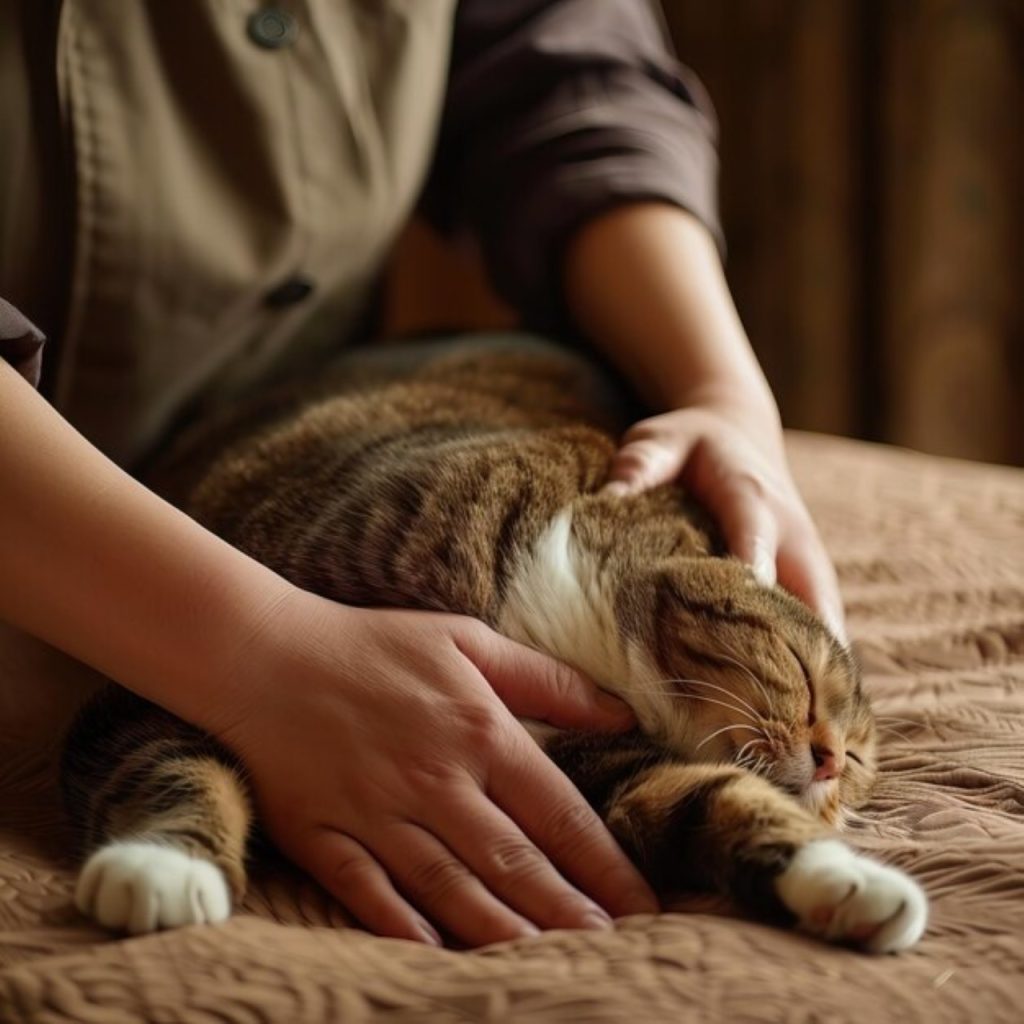
Your cat’s mood plays an essential role in determining the perfect moment for a relaxing massage session. To guarantee your feline friend is receptive to touch, observe their body language and behavior closely.
Look for signs of contentment, such as a relaxed posture, half-closed eyes, or a gently swaying tail. These indicators suggest your cat is in a state of feline relaxation and more likely to enjoy a massage.
Conversely, be aware of signs that your cat isn’t in the mood for physical contact. Flattened ears, a twitching tail, or dilated pupils may indicate stress or agitation.
If you notice these signals, it’s best to postpone the massage until your cat is more at ease.
Timing is vital for your cat’s comfort. Many cats prefer to be massaged after a meal or during their usual nap time. Avoid approaching your cat when they’re engaged in activities like grooming, eating, or using the litter box.
Instead, wait for a moment when they’re naturally calm and receptive to interaction.
Choose Calm Environment
Once you’ve determined your cat is in a receptive mood, selecting the right environment for their massage is the next key step in ensuring a pleasant experience.
Choose a quiet, comfortable area where your cat feels safe and relaxed. This could be their favorite spot on the couch, a cozy cat bed, or even your lap if that’s where they prefer to unwind.
Consider the ambient lighting in the room. Dim, warm lighting can help create a calming atmosphere for your feline friend. Avoid harsh, bright lights that might make your cat feel exposed or uncomfortable.
You can also incorporate soothing sounds to enhance the relaxing environment. Soft classical music or nature sounds, like gentle rain or chirping birds, can help mask any sudden noises that might startle your cat.
Ensure the temperature is comfortable for your cat, as they’re sensitive to extremes. Remove any potential distractions, such as toys or other pets, that might interrupt the massage session.
Starting With Gentle Petting
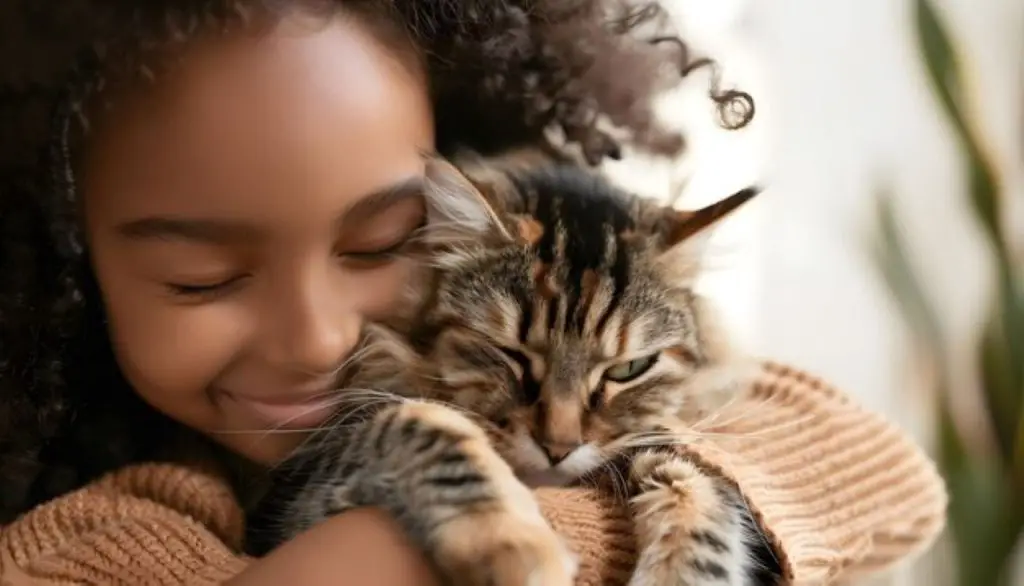
Begin your cat massage session by gently stroking your feline friend’s fur, allowing them to become comfortable with your touch. Use long, gentle strokes along their back and sides, paying attention to their body language.
If they seem relaxed and receptive, continue with slow, rhythmic movements.
Start at the base of your cat’s head and work your way down their spine. Use the pads of your fingers to apply light pressure, mimicking the grooming motions of a mother cat.
Pay special attention to areas your cat enjoys being petted, such as behind the ears or under the chin.
As you progress, gradually increase the pressure of your strokes, but always remain gentle and attentive to your cat’s reactions. If they show signs of discomfort or agitation, return to lighter touches or take a break.
Identifying Your Cat’s Preferences
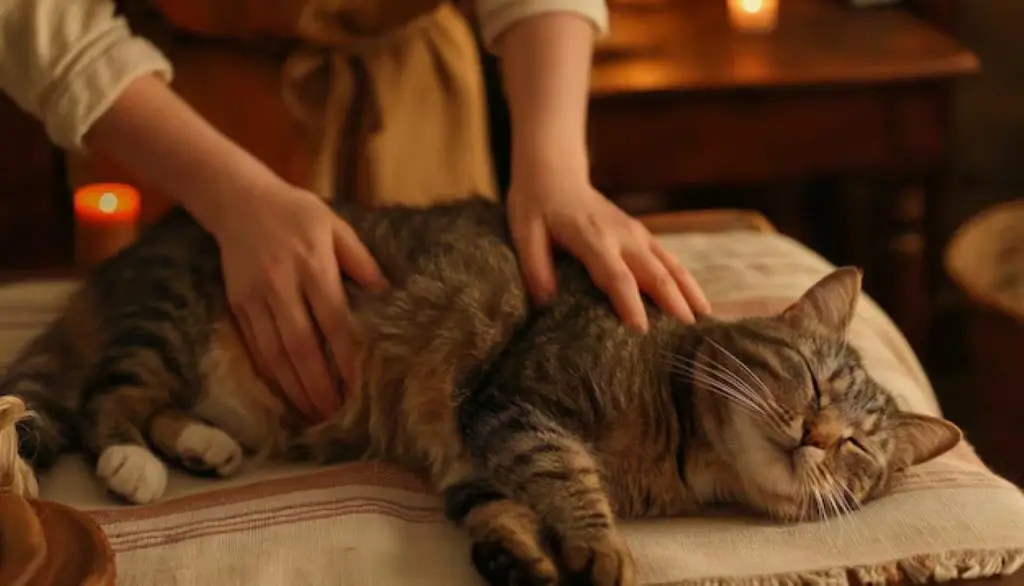
To identify your cat’s massage preferences, pay close attention to their body language as you begin.
Watch for signs of enjoyment, such as purring, kneading, or leaning into your touch, and be alert for indications of discomfort like tail flicking or ear flattening.
Experiment with different techniques, varying pressure and location, to discover which areas and methods your cat responds to most positively.
Observe Body Language
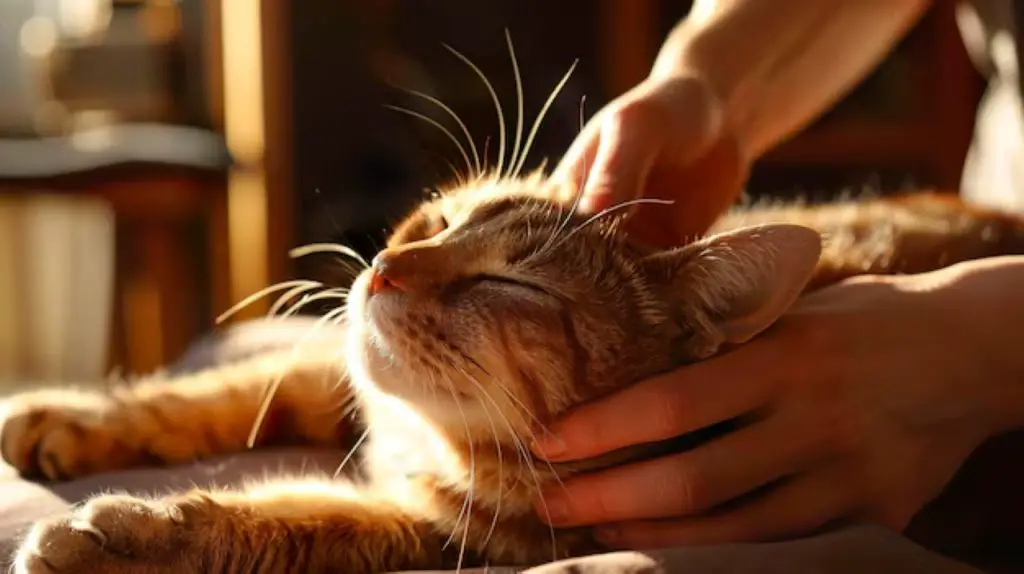
Cats communicate volumes through their body language, and learning to interpret these signals is essential for giving your feline friend a massage they’ll enjoy.
Pay close attention to your cat’s posture, tail position, and facial expressions as you initiate contact. A relaxed cat will have a loose, calm body with their tail held low or gently swaying.
Their ears will be in a neutral position, and their eyes may be half-closed, indicating contentment.
As you begin the massage, watch for signs of feline relaxation. A cat that’s enjoying the experience may knead with their paws, purr softly, or even drool slightly.
These are all positive indicators of cat communication during a pleasant interaction.
However, be alert for signs of discomfort or overstimulation. If your cat’s tail starts twitching rapidly, their ears flatten, or they begin to growl or hiss, it’s time to stop the massage immediately.
Some cats may also simply walk away when they’ve had enough.
Test Different Techniques
Once you’ve mastered reading your cat’s body language, it’s time to explore various massage techniques to discover what your feline companion enjoys most.
Start by gently stroking your cat’s back with long, smooth motions from head to tail. Pay attention to their purring responses, which indicate contentment and relaxation.
Next, try circular motions around the cheeks and behind the ears, areas many cats find pleasurable. Experiment with different pressures, from light touches to more firm kneading techniques.
Some cats may prefer gentle scratching under the chin or at the base of the tail.
For a deeper massage, use your fingertips to apply gentle pressure along the spine and shoulders. Mimic a mother cat’s kneading by alternating pressure with your fingers on your cat’s sides or belly, if they allow it.
Always respect your cat’s boundaries and stop if they show signs of discomfort.
Massage Techniques for Cats
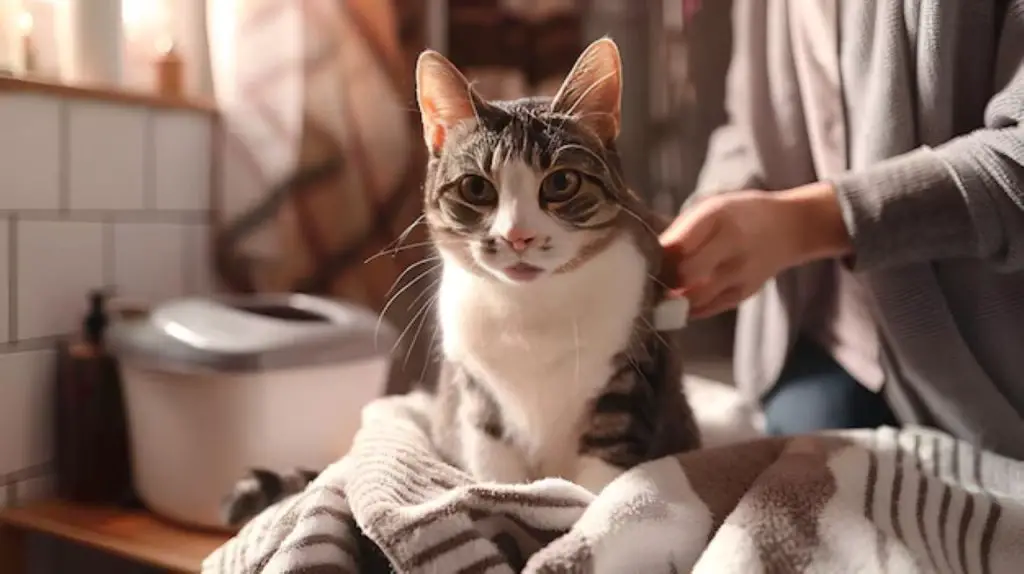
Gentle strokes and careful pressure form the foundation of effective feline massage techniques.
When massaging your cat, start with long, slow strokes along their back, from head to tail. This mimics a mother cat’s grooming and can instantly relax your feline friend.
Next, use your fingertips to make small, circular motions around their shoulders and neck, areas where cats often carry tension.
For the legs and paws, gently squeeze and release, working your way down to their toes. Be mindful of your cat’s reactions; some may not enjoy paw massages.
Focus on the base of the tail and the chin, two spots many cats love to have rubbed. As you massage, listen for purring, which indicates contentment and can have health benefits for your cat.
Regarding massage frequency, aim for short sessions of 5-10 minutes, 2-3 times a week. This regularity can help reduce stress, improve circulation, and strengthen your bond.
Always respect your cat’s boundaries and stop if they show signs of discomfort. With patience and practice, you’ll discover the techniques your cat enjoys most.
Areas to Focus On
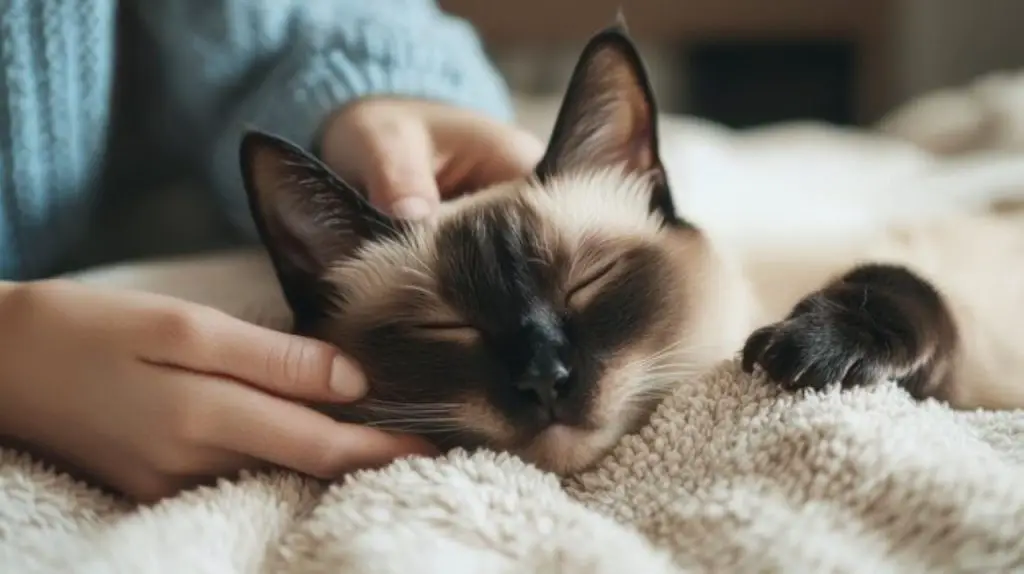
When giving your feline friend a massage, certain areas deserve special attention for maximum relaxation and health benefits. Understanding cat anatomy and pressure points is essential for an effective massage experience.
Start with your cat’s head, focusing on the temples and behind the ears. These areas contain numerous nerve endings and can help reduce stress.
Gently massage the cheeks and chin, where scent glands are located, to stimulate a sense of comfort and familiarity.
Move down to the neck and shoulders, where cats often carry tension. Use circular motions with your fingertips to work out any knots.
The base of the tail is another key area, as it’s connected to nerves that run along the spine. Massage this spot to promote overall relaxation.
Don’t forget the paws – many cats enjoy gentle pressure on their paw pads. However, be mindful of your cat’s comfort level, as some may be sensitive in this area.
The chest and belly are also important, but approach these zones cautiously as they’re vulnerable spots for cats.
Remember to observe your cat’s reactions throughout the massage, adjusting your technique and pressure accordingly to guarantee a positive experience.
Signs Your Cat Enjoys It
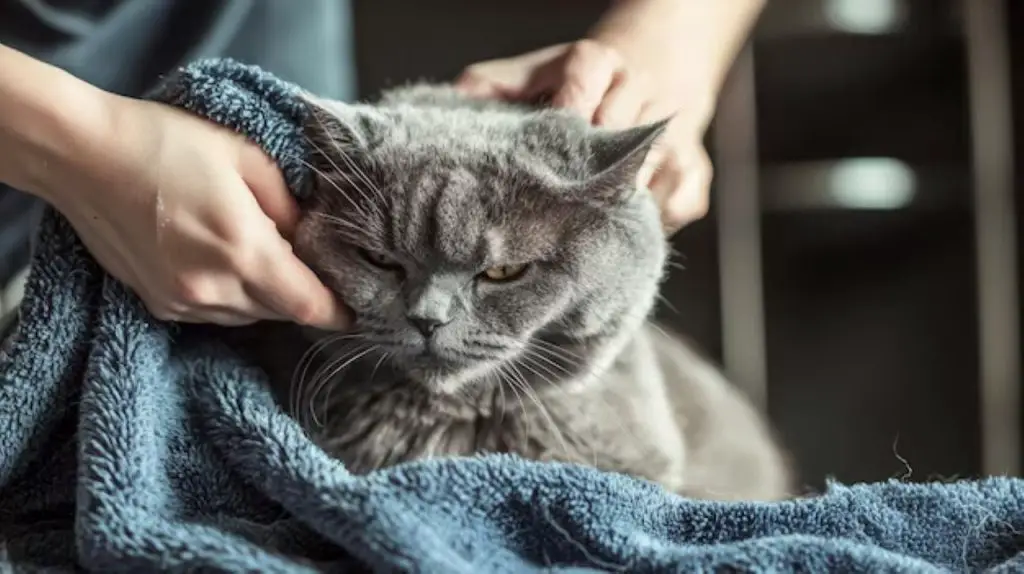
As you massage your feline companion, it’s important to recognize the telltale signs that indicate they’re enjoying the experience. One of the most obvious indicators is cat purring.
When your cat starts to emit that soothing, low rumble, it’s a clear signal that they’re content and relaxed.
Pay attention to their body language as well. A happy tail, often held high with a slight curve at the tip, suggests your cat is in a positive mood and receptive to your touch.
Look for other physical cues such as kneading with their paws, a behavior often associated with comfort and contentment. Your cat may also close their eyes or blink slowly, a sign of trust and relaxation in feline body language.
Some cats may even stretch out, exposing their belly, which demonstrates they feel safe and comfortable in your presence.
Be mindful of your cat’s ears too. Forward-facing or slightly to the side indicates a calm and receptive state.
If your cat leans into your touch or repositions themselves to guide your hand to a preferred spot, they’re likely enjoying the massage and encouraging you to continue.
Frequent Questions and Answers
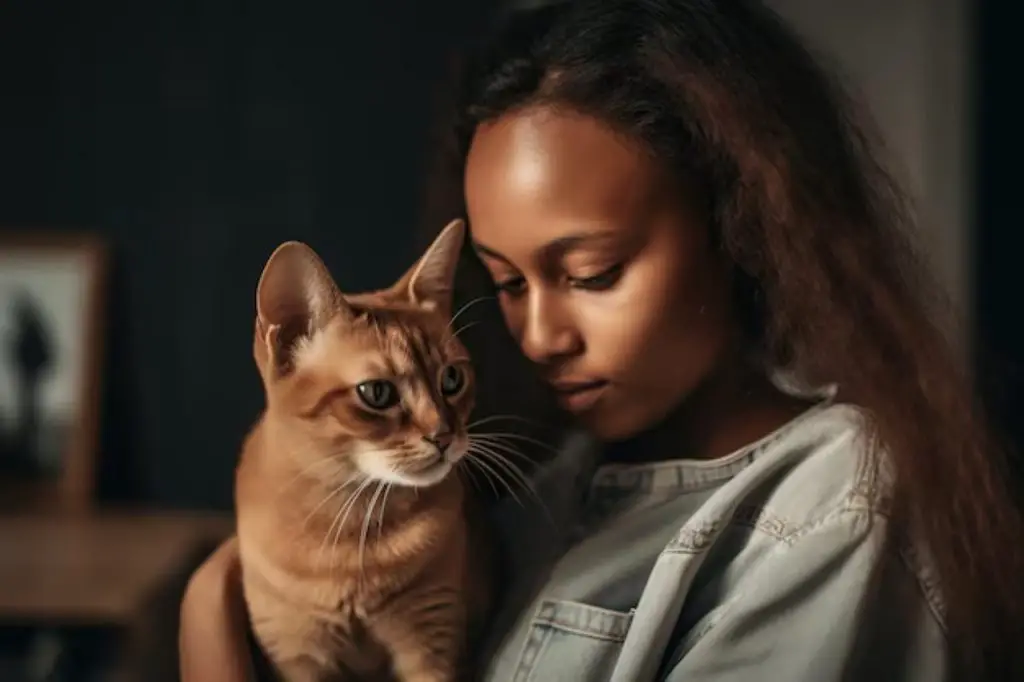
No, you shouldn’t use essential oils during your cat’s massage. They’re toxic to felines and can cause serious health issues. Instead, focus on gentle, oil-free massage techniques using your hands. Your cat’s safety is paramount in any grooming activity.
Did you know 68% of cats enjoy regular massages? You should massage your cat 2-3 times weekly. Use gentle, circular motions and pay attention to your cat’s body language. Adjust frequency and massage techniques based on your feline friend’s preferences.
You can safely massage elderly or sick cats, but be gentle and attentive to their needs. Watch for signs of discomfort and consult your vet first. Elderly cat health is delicate, so tailor your approach to their specific condition.
Ever wondered if your feline friend’s behavior could improve with a gentle touch? You’ll be pleased to know that massaging your cat can offer behavioral benefits, including stress relief. It’s a purr-fect way to bond and soothe your furry companion.
Yes, you should trim your cat’s nails before a massage. Nail trimming is an essential part of massage preparation. It’ll prevent accidental scratches and guarantee a more comfortable experience for both you and your feline friend.
